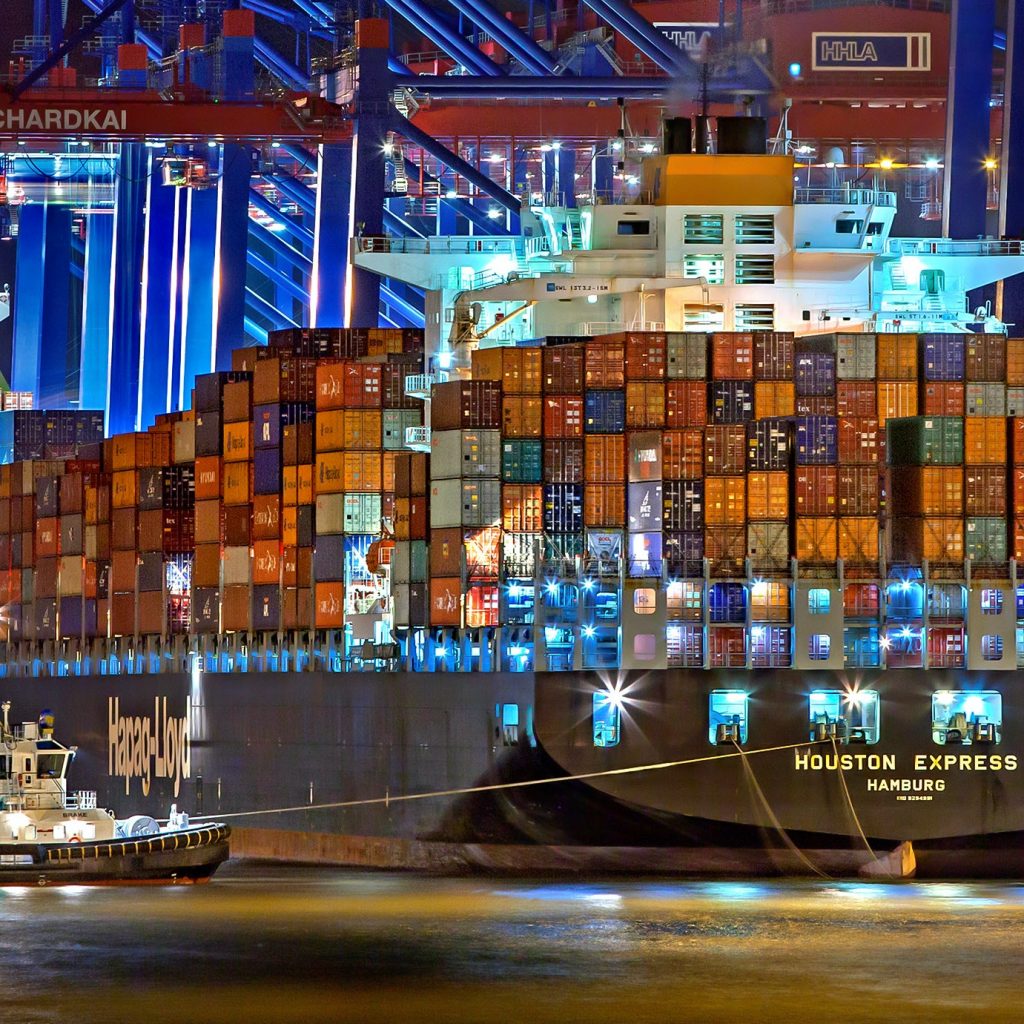Ocean Carriers to Introduce “Slidings” – Will They Help Reliability?
I’ve typed the words “ocean freight carriers are notoriously unreliable” so many times over the last decade of writing in Universal Cargo’s blog that I should probably have the statement permanently on my clipboard, ready to paste into any article at any time. Now there’s a new buzzword going around in the international shipping industry, which I’ve never typed, that ocean carriers are saying will help increase reliability: “slidings.”

What is or are “slidings” and will it/they actually make ocean freight carriers more reliable? Those are the questions this post will explore, but first…
How Bad Has Ocean Carrier Reliability Gotten?
In 2020, ocean carrier unreliability hit all new levels.
Regular readers of this blog likely don’t need me to go back through the immense blanked (cancelled) sailings carriers implemented this year, their rolling over of cargo to later sailings (even charging shippers no-roll premiums), their interdependency on each other through alliances, carriers’ focus on profits over service (something that has especially hurt U.S. agricultural exporters), and their severe lack of transparency contributing to these shipping lines regularly failing to deliver cargo to ports on schedule.
U.S. shippers, in general, don’t need me to tell them ocean carriers will likely be behind schedule with delivering their cargo either. But just how bad is it? Last month, Asia to U.S. container ships failed to arrive on time over 70% of the time. Worldwide, ocean freight carriers only had their container vessels on schedule about half the time. Those stats comes from a Sea-Intelligence service reliability index cited in a Bloomberg article I quoted in our last blog post, warning shippers, especially U.S. importers, to expect delays and fees.
Carriers Not Always At Fault
To be fair, ocean freight carriers are not at fault for all of their shipping schedule failures. Natural events like storms – not even needing to be the size of hurricanes – creating high winds and waves have an impact. A perfect example is the MV ONE Apus losing and suffering damage to a massive number of shipping containers after being hit by a storm. The ship was sailing to the Port of Long Beach but ended up turning back and docking in Japan to assess the damage.
Carriers have increased the exposure and risk storms hitting ships can cause. In recent years, carriers have moved to bigger and bigger ships, including massive megaships as long as skyscrapers are tall and capable of carrying well over 20,000 TEU (twenty-foot equivalent units) of goods. With their carrier alliances sharing ships and push to fill them, it is more difficult for shippers to spread their cargo out over different vessels to reduce risk.
Another factor adding to carrier unreliability beyond carrier control is port congestion. Yes, port congestion is something to which carriers and their practices like the use of megaships and blanked sailings disrupting the movement and allocation of shipping containers has contributed, but there are many other factors like demand, trucker shortages, labor strife, and pandemic protocols and hours that carriers have nothing to do with that have created or currently are creating congestion. Mike Wackett ends an article in the Loadstar with a quote that articulates this point:
SeaIntelligence’s Lar Jensen commented that due to the long wait times being experienced at ports, “it would not be reasonable to purely blame carriers for this dramatic drop in performance”.
That article just happened to be about “slidings.”
What Is “Slidings”
“Slidings” comes out of the phrase “schedule sliding.” Schedule sliding is backing up or sliding back the scheduled arrival date of a vessel at a port to a later date. With slidings, ocean freight carriers are adding more time to the transit times on their sailing schedules to account for delays they’re experiencing because of port congestion (as well as other factors).
Perhaps a better way to think about the concept is stretching the transit times of ships, but maybe someone thought “slidings” sounded better than “stretchings.” Maybe they were right. People might have said “stretchings” are carriers stretching the truth about how long sailings take. But it’s certainly true congestion holds up ships and prevents them from going from port to port as originally scheduled.
Wackett, in his article, describes slidings as adding buffer time to schedules before giving the following example of a carrier utilizing sliding:
Hapag-Lloyd said today it was adding seven days to the westbound schedule of its AS2 Asia to South America east coast schedule for 13 weeks – one of two loops it operates on the trade in cooperation with Maersk, Hamburg Süd, MSC and ONE.
When carriers talk about slidings, they’re talking about these longer schedule times directly in relation to port congestion as seen when Wackett quotes Hapag-Lloyd CEO Rolf Habben Jansen:
“Looking at congestion we see at US ports and other places we will still see delays in the first quarter, and we will not see a lot of blankings, but we will see slidings, because when a ship has to wait six days at one port, and at another port it has to wait four days, you are 10 days behind schedule, which in reality means that you also lose a week, even if you sail back at top speed, so I think that we will see slidings and I think that we will also see all the capacity that is available deployed.”
Slidings Instead of Blank Sailings
What stands out to me in the above quote is that Jansen says in the first quarter there won’t be many blank sailings, but there will be slidings.
Right now, there are many projecting demand to remain high in the first quarter of 2021, something we will get into more in a future blog. With strong demand, you would not expect to see a great deal of blank sailings. Even so, carriers have shown strong discipline in controlling capacity over these last two years, especially in 2020, with blank sailings being their biggest tool for doing so. Therefore, even with high demand, some blank sailing will likely still occur. However, the same effects blank sailing gives could be garnered through slidings.
If transit times are stretched enough, fewer sailings could fit in the schedule without adding additional ships. If moving forward, carriers created schedules with fewer voyages that have longer sailing times, they can still reduce capacity, push back a sailing within their buffer time, even increase their buffer time, and label it all under slidings instead of cancellations or blankings.
Will Slidings Actually Increase Reliability?
Slidings could end up being more of an optics measure than an actual change. Ship arrivals may still take just as long but with a larger scheduled arrival window. Ships arriving under the same kind of time lapses would no longer be technically late according to the schedule, but shippers wouldn’t be seeing their goods any faster.
Even if it is just a change in communication, fewer ships being technically late may ease some of the anger from shippers of repeatedly having their cargo fail to arrive at port when scheduled and reduce tension between them and the carriers. However, there may be a more concrete improvement caused by slidings.
Sometimes, port congestion, and other reasons for falling behind schedule, cause carriers to skip ports altogether with their ships in attempts to stay on schedule, get back on schedule, or just reduce how far behind they are. Adding more buffer time into schedules may significantly reduce the pressure on carriers to arrive, making it less likely they’ll feel the need to skip a port and offload cargo elsewhere.
“If you have to wait off a UK port for a week and then eventually decide to skip and dump the boxes in Zeebrugge, Rotterdam or Bremerhaven, then the schedule is totally shot to pieces,” [an Asia-North Europe carrier] said.
“Some of us have been arguing that we have to build more buffer time into the schedules and, by doing so, we would actually save costs by not having to make last-minute port changes,” he said.
The carrier, not surprisingly, talks about the last-minute change in port in terms of cost and profit, but service could obviously improve in this scenario too. Having their goods offloaded at a different port than planned can be very costly in terms of delay for shippers. Sometimes it requires shippers to make new, more difficult, and more expensive arrangements to retrieve their cargo.
While it’s impossible to know exactly how the use of slidings will turn out, there is at least some potential improved reliability.




